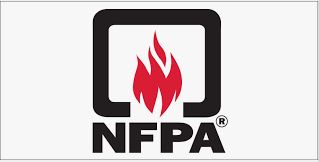New NFPA standard for firefighter devices sets challenging benchmark for vendors
Firefighters’ RF devices and remote speaker microphones will have to pass unprecedented durability testing and include a data-logging capability—similar to a “black box” on an airplane—to achieve certification under the new standard published by the National Fire Protection Association (NFPA).
NFPA is well known for developing fire-safety standards for citizens and firefighters, but the NFPA 1802 standard that was published in January is the organization’s first that addresses the performance of RF devices—typically, two-way radios—and RSMs, according to Don Griffis, one of the L3Harris representatives who served on the technical committee that developed the standard.
“Every piece of equipment that [firefighters] put on to go into that burning structure is NFPA-certified—with the exception of their communications gear, the radio they’ve got on them,” Griffis said during an interview with IWCE’s Urgent Communications. “Until January of this year, there wasn’t a standard for it, at all.”
And NFPA 1802 promises to be a difficult standard for device manufacturers to meet, as no fire radios—from L3Harris or other vendors—on the market today can meet the demanding durability testing, according to Griffis.
“The radios have to survive a 1,700-degree flame impingement … for 10 seconds while being fully operational. And it’s not just the radio—the NFPA calls for the radio and remote speaker mic that’s part of the system [to meet the NFPA 1802 standard],” he said. “It’s all got to work. And if you think that’s tough, there’s a 500-degree-for-5-minutes [test], and the radio has to operate and not melt.”
Given the materials used in existing fire radios, it is not surprising that none of the devices available in the marketplace today can withstand such environments, Griffis said.
“All radios that are manufactured today are made with either a polycarbonate or some other type of plastic. And when the NFPA testing is done on those, they melt,” he said.
As challenging as those pure heat tests are, they aren’t as difficult as one that is designed to evaluate whether a device can withstand the rigors of the fireground, where water can be as common as high temperatures, Griffis said.
“The 350-degree test is the hardest one,” Griffis said. “You think, ‘It’s a lower temperature, so it’s not so bad. You bake the radio at 350 for 15 minutes. When the timer goes off at 15 minutes, you’re going to reach in there with gloves and take this radio out. Within 30 seconds, the NFPA wants you take that radio and submerge it into two meters of water at 72 degrees for two hours. After two hours, you take the radio out, and you run it through its tests. It has to perform RF and audio, just like it when it was brand new, out of the box.
“If it passes, it goes back into the oven, and that test is repeated five more times. So it’s a total of six times going through that.”
Given the performance requirements in such difficult environments, the radio-development team at L3Harris turned to its Space & Airborne Systems division—a unit with experience dealing with the extreme heat and vibration challenges associated with devices re-entering the earth’s atmosphere after traveling in the cold temperatures of space, Griffis said.
In addition to its durability requirements, NFPA 1802 requires certified devices to including data-logging functionality, which can be used for forensic assessments of incidents—much like the way “black box” voice logs are used to determine what happened during the moments prior to an airplane crash.
“Every user interaction—the last 2,000 events—are stored in this hardened device that has a heat shield around it,” Griffis said. “Think of it as a ‘black box.’
“So, at any point in time, a user agency can retrieve the last 2,000 events that device has undergone—everything from when the unit powers on to when a user presses the push-to-talk button or the emergency button, when the battery changes from 100% down to 75% and down 50%, what channel or talk group they were on, when they received traffic. It is all logged in the radio. That’s big.”
Ken Rehbehn, Omdia’s senior principal analyst for public safety and critical communications—and a longtime volunteer firefighter—applauded the inclusion of this “flight-data recorder” feature in the NFPA 1802 standard.
“The unit will survive, and it will provide some important clues as to what was happening when things went bad. So, we will know about communication attempts by the person who is the victim … I believe that the way the standard is crafted, this is information that can be extracted forensically to investigate a line-of-duty death. That’s really the purpose of that information.”
Alan Tilles, a partner in the law firm of Shulman Rogers Gandal Pordy & Ecker, said he understands the forensic firefighting purposes of the data-logging capability but urged officials to consider creating policies to avoid potential unintended implications that have arisen with other public-safety and IoT devices.
“Every issue that comes up with a body camera would come up here,” Tilles said during an interview with IWCE’s Urgent Communications. “How do you store it? How do you ensure the security of the storage? How long do you keep it? I could go on and on and on.
“Every bit of information like that becomes both a shield and a sword. You’d love to use that information to get better at the job of firefighting, but you have to discuss, up front, all of the downsides … We’re not plowing new ground here, because we’ve seen the same issues with body cams.”
While the durability and performance capabilities of an NFPA 1802-compliant device promise to be great, there are concerns that these stringent requirements will mean the handset will be expensive—perhaps too expensive for some cash-strapped agencies.
Griffis acknowledged that pricing does tend to increase as manufacturers strive to achieve the high-performance, customized standards established by an organization like NFPA.
“There’s a lot of tech that’s in there, and the hardening of it is expensive,” Griffis said. “What I tell people … is that thermal-imaging camera—prior to NFPA certification—ran $1,100 to $2,500. Now, thermal-imaging cameras are $12,000 to $13,000.
“Now, I’m not saying that we’re going to be in that same realm, but the industry—the labor unions and the insurance companies—will be a forcing factor, I believe, to get that certification. And we’re going to keep it as affordable as we can.”
Griffis declined to discuss pricing or any details about any devices L3Harris is developing but did say that company officials are “confident we’ll meet the standard.”
“We’re committed to it, he said. “We feel very strongly about what the NFPA is asking for.”
Motorola Solutions—another vendor that participated on the NFPA committee to develop the NFPA 1802 standard—has published an executive summary stating that the company is “committed to bringing an NFPA 1802-compliant solution to market.”
Chris Farrell, NFPA staff liaison for the technical committee on Electronic Safety Equipment that created the standard, said that—like other NFPA standards—every local and state jurisdiction is allowed to adopt NFPA 1802, but none of them are required to do so.
Will the NFPA 1802 standard be adopted broadly, resulting in a wholesale replacement of fire radios throughout the United States in the near term?
Rehbehn said he believes the realities of budgeting will be big factors in determining how quickly NFPA 1802-compliant devices are bought for fire agencies.
“I did an informal poll to get a sense of what the impact will be,” Rehbehn said during an interview with IWCE’s Urgent Communications. “The consensus of the respondents was that they would not proactively upgrade their portables. However, if they were purchasing new portables, this will be a mandatory requirement, because it’s safety-related.
“They have the option of not requiring it, but it becomes a challenge, if there’s a death and the device was not meeting the state of the art—it becomes a difficult conversation in a courtroom … The impact of a jurisdiction deciding not to procure a unit with this capability could be financially challenging, if there’s a line-of-duty death or injury and the communications device was not to standard.”
















